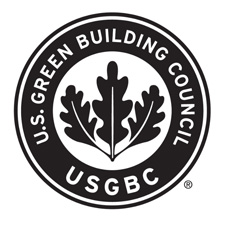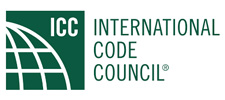Buildings are a major contributor to local pollution and global warming by consuming electricity to support daily activities of students, faculty and staff.
Two ways to reduce the negative impact of buildings are:
- Power them with renewable energy
- Make them as energy efficient as possible
Dallas College is using both of these strategies.
In June 2021,
Dallas College Board of Trustees approved the college to begin purchasing 100% renewable energy from Gexa Energy. This effort reduces our college greenhouse gas emissions by approximately 30,000 metric tons annually.
The fixed-rate contract also avoids the variable rates that shocked some consumers following the February freeze. For the next five years, the contract is expected to reduce energy costs, reduce the overall carbon footprint of college facilities and conserve crucial resources for the community.
Dallas College is recognized by the
EPA Green Power Partnership program for its effort purchasing 100% renewable energy.

Green Certified Buildings at Dallas College
Dallas College has six certified green buildings by the United States Green Building Council (USGBC) for Leadership in Energy and Environmental Design (LEED).
The college six LEED certified and pending seventh LEED certified buildings are:
The USGBC-LEED standards help guide equity, energy and environmental design standards for buildings, campuses and neighborhoods. Dallas College has seven certified LEED buildings and uses the LEED checklist in 8 areas to help guide new construction and building operations and maintenance. The 8 areas of LEED are:
- Location and Transportation
- Sustainable Sites
- Water Efficiency
- Energy and Atmosphere
- Materials and Resources
- Indoor Environmental Quality
- Innovation
- Regional Priority

New Green Buildings at Dallas College
The International Code Council (ICC) provides information, tools, and resources for organizations to advance building safety solutions.
Dallas College uses the ICC codes for energy conservation and green building to help guide new construction and building operations maintenance.
The International Energy Efficiency Code (IECC) and International Green Construction Code (IgCC) are updated every few years to help organizations improve building safety solutions for energy and green building.

The
2019 Dallas College Bond Program follows the
City of Dallas Green Code for all new construction. The Dallas Green Code is a local municipal ordinance for all new construction that is adapted from the 2015 International Green Construction Code (IgCC).
The Dallas College Bond Program focuses on nine areas of sustainability and green building:
- Building Orientation to be Optimized based on Local Sun Paths and Shade Optimization with Landscaping
- Engaging Locally/Regionally Sourced Vendors/Suppliers
- Use of Building Material with Post-Consumer Recycled Content
- Utilization of Low-Flow Plumbing Fixtures
- Selected Products and Colors for Exterior Hardscape to reduce Heat Island Effect
- Design to Provide Access to Quality Transit Systems
- Design to Promote Micro-Mobility
- Passive/Active Daylight Strategies in Occupied Spaces
- LED Lighting in Design
Energy Efficiency at Dallas College
The Dallas College Energy Management Department leads and manages all utilities efficiency and resource conservation projects in areas of consumption for electricity, water, natural gas and fleet vehicle fuel.
Dallas College follows the goals outlined by the
Texas State Energy Conservation Office (SECO) to reduce consumption by 5% annually for seven consecutive years. The Energy Management Department also utilizes industry-recognized frameworks such as the
International Energy Conservation Code (IECC),
Energy Star for buildings and maintenance.
From 2019 to 2021, the Facilities Improvement Plan (FIP) invested more than $58 M in building upgrades to enhance the resilience and sustainability of college buildings and campuses.
The FIP areas of sustainability investment are nine different areas shown in the table below.
Sustainability and
Green Building Areas | Summary of Estimated
Construction Costs |
|---|
| Resilience, Emergency Preparedness | $23,774,936
|
| Energy Efficiency | $15,125,811
|
| Weatherization, Energy Efficiency | $13,592,448
|
| Water Efficiency | $2,000,000 |
| Energy Efficiency, Water Efficiency | $1,450,000
|
| Education Success | $1,010,000
|
Energy Efficiency, Water Efficiency, Resilience
| $688,500
|
| Fuel Efficiency | $405,000
|
| Weatherization | $217,317 |
|
Grand Total |
$58,264,011 |
The top four priority investment areas comprised more than $38 M combined, including safety, resilience and emergency preparedness, energy efficiency with mechanical system improvements, energy efficiency with weatherization and roofing improvements, and energy efficiency with building automation controls.
Safety, Resilience and Emergency Preparedness
Fire-and-life-safety equipment and electrical systems often represent unseen hazards for building occupants. When failures occur in these systems, the consequences can be dire and immediate.
Dallas College has put forth more than $20.3M to assess, evaluate, and make capital improvements in fire-and-life-safety and electrical systems. These efforts ensure potential unseen, high impact failures are prevented or minimized when possible.
Energy Efficiency with Weatherization and Roofing Improvements
Roofing and the building envelope are essential building systems. When functioning, performance goes unnoticed. When non-functioning, envelope failures represent compromises in energy performance and occupant safety and comfort.
Dallas College has invested more than $13.8M since 2019 in building envelope improvements. All roof replacements are Energy Star rated, high reflectivity and high emissivity products coupled with increases in insulation levels that meet or exceed current building code standards.
Energy Efficiency with Mechanical System Improvements
Building mechanical systems, including chillers, boilers, and air-handling units, are the largest energy using components within a building. Upgrades to these components improve efficiency as technology advances are realized. This results in fewer emissions through decreased energy usage as well as reduced refrigerant loss due to equipment age and outdated refrigerant technologies. Dallas College has invested more than $10.5M in major mechanical system updates since 2019.
Energy Efficiency with Building Automation Controls
Modern buildings rely increasingly on smart building controls to coordinate and monitor the function and performance of building mechanical systems and environmental controls - the major energy using systems in buildings.
Dallas College has committed more than $4.3M in building automation controls updates, resulting in more coordinated and energy-efficient mechanical system operations. These software systems also provide for Demand Response actions, allowing Dallas College to respond to high load conditions within the ERCOT (Energy Reliability Council of Texas) electric grid. In this way, we can do our part to reduce the impact of college operations and increase resilience of the grid.
For additional information, please contact
Dallas College Facilities Management and Planning.